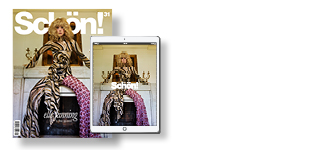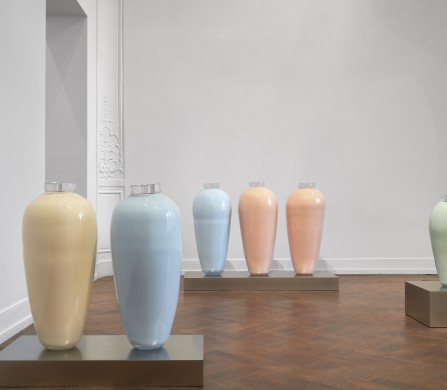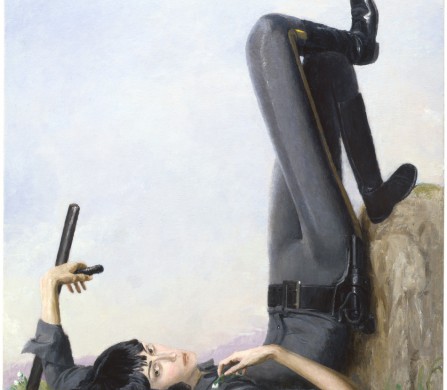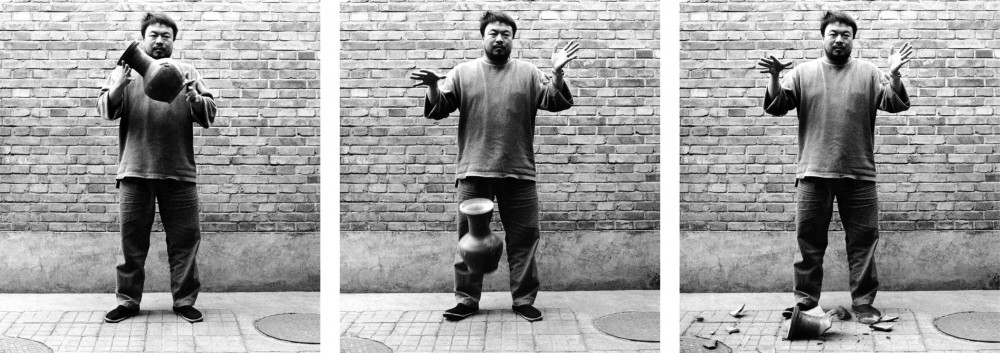
Ai Weiwei, Dropping a Han Dynasty Urn, 1995
3 black and white prints, each 148 x 121 cm
Courtesy of Ai Weiwei Studio
Image courtesy Ai Weiwei
© Ai Weiwei
It is the first room that catches the imagination in Ai Weiwei’s striking, frequently spectacular exhibition at the Royal Academy. To reach it, first you must pass through a thicket of reconstructed trees, each clamped into place by rusting iron girders in the RA courtyard. A counter to these snarling, twisted, fairy tale forms, the opening room eschews theatricality to thrilling effect. In the small gallery, an assembly of straightened steel rods on the floor creates a rippling, seismographic pattern evocative of the contours of the Chinese landscape.
In its formal tension between fluidity and control, the work establishes an exhibition choreography. Co-curated with Ai himself, the architectural approach to all aspects of the exhibition draws threads between works from 1993 to the present. This architectural emphasis plays predominantly with scale; smaller, more intricate works ebb and flow throughout the exhibition, interspersed with room-filling installations.
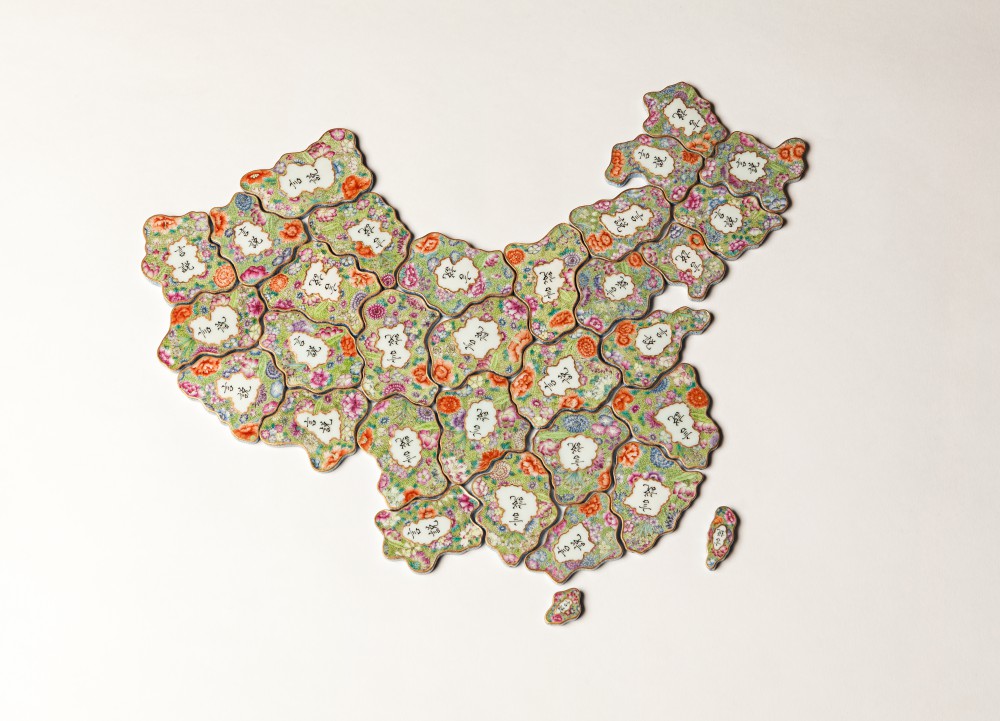
Ai Weiwei, Free Speech Puzzle, 2014
Hand painted porcelain in the Qing dynasty imperial style,
51 x 41 x 0.8 cm
Courtesy of Ai Weiwei Studio
Image courtesy Ai Weiwei
© Ai Weiwei
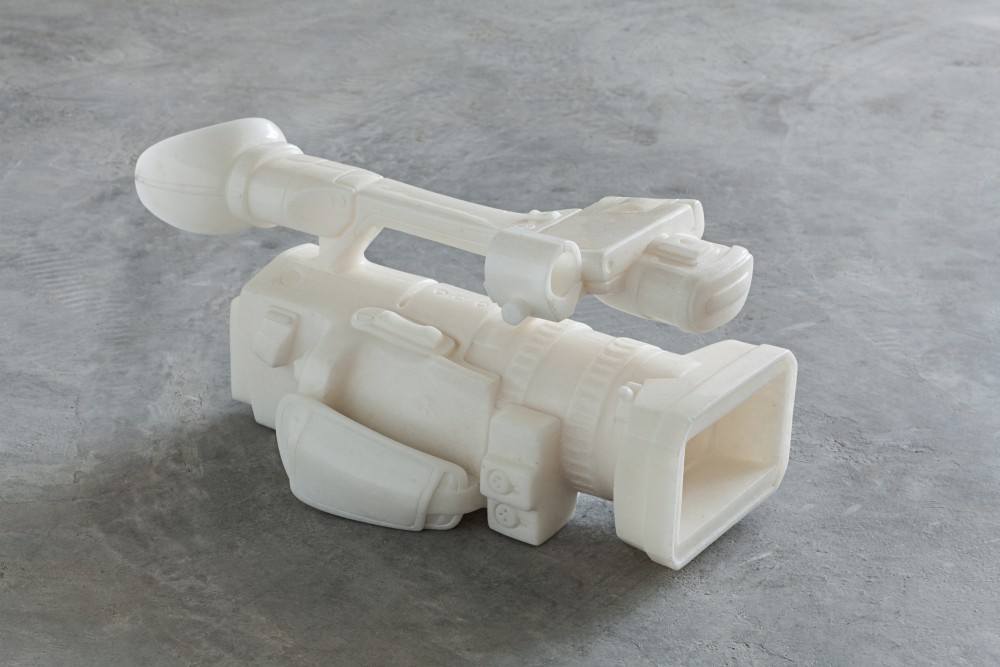
Ai Weiwei, Video Recorder, 2010
Marble, 43 x 19 x 19 cm
Courtesy of Ai Weiwei Studio
Image courtesy Ai Weiwei
© Ai Weiwei
Despite the fluidity of the experience of scale, the repurposing of materials is a central connecting thread. A room of meticulously altered wooden furniture sculptures are elegantly rendered useless, stripped of their functionality. It feels like a wry comment on the stultifying effects of bureaucracy. Surveillance Camera, exquisitely carved from marble, references the ostentation of the Ming dynasty. Members of the Imperial dynasty would be buried with marble recreations of everyday objects. Again Ai creates a purposeless object, this time through fabrication rather than manipulation of material. It is a clever pairing. The weight of the State and the powers of surveillance that have shaped Ai’s artistic and activist life hang over both works.
This exhibition is about more than material exploration: it is suffused with the politics of Ai’s homeland. At times this intense and personal connection to China lends his works great emotional power. In Souvenir of Shanghai, a solid block of rubble and woodcarving sits oddly next to a spilling mass of porcelain river crabs. The rubble constitutes the remains of Ai’s Shanghai studio that was demolished by the Chinese authorities for contravening planning regulations. Despite being under house arrest at the time, Ai arranged a protest lunch there for 800 supporters, where they feasted on river crabs – He xie – a homonym for the spelling of harmony.
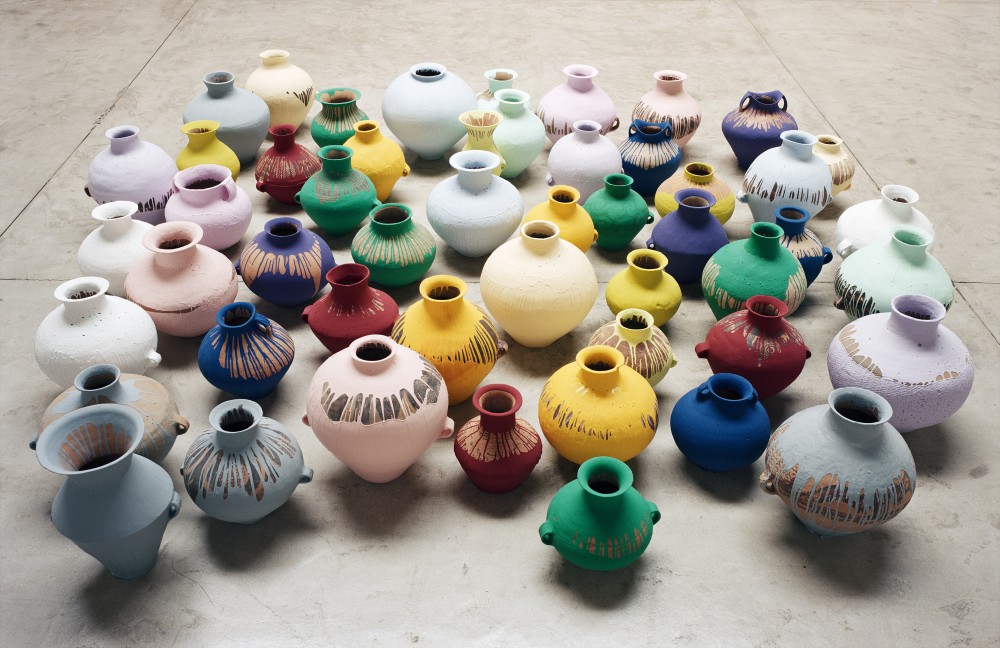
Ai Weiwei, Coloured Vases, 2006
Neolithic vases (5000-3000 BC) with industrial paint, dimensions variable
Courtesy of Ai Weiwei Studio
Image courtesy Ai Weiwei
© Ai Weiwei
The exhibition is breath taking in parts, at times for the architectural feat of installation and ambition, at times for its raw emotional power. This is combined in Straight, a charged and abstract piece of memory sculpture comprised of over 200 tonnes of painstakingly straightened reclaimed rebar to remember the lives lost to the Sichuan earthquake in 2008. At once a moving and tactile memorial to lives lost, it also viciously critiques substandard government building methods. This alone makes the exhibition a must see.
The Ai Weiwei exhibition is on at the Royal Academy of the Arts from 19th Sept – 13th December.
Words / Edward Ball
Follow him here.
Discover the latest issue of Schön!.
Now available in print, as an ebook, online and on any mobile device.












